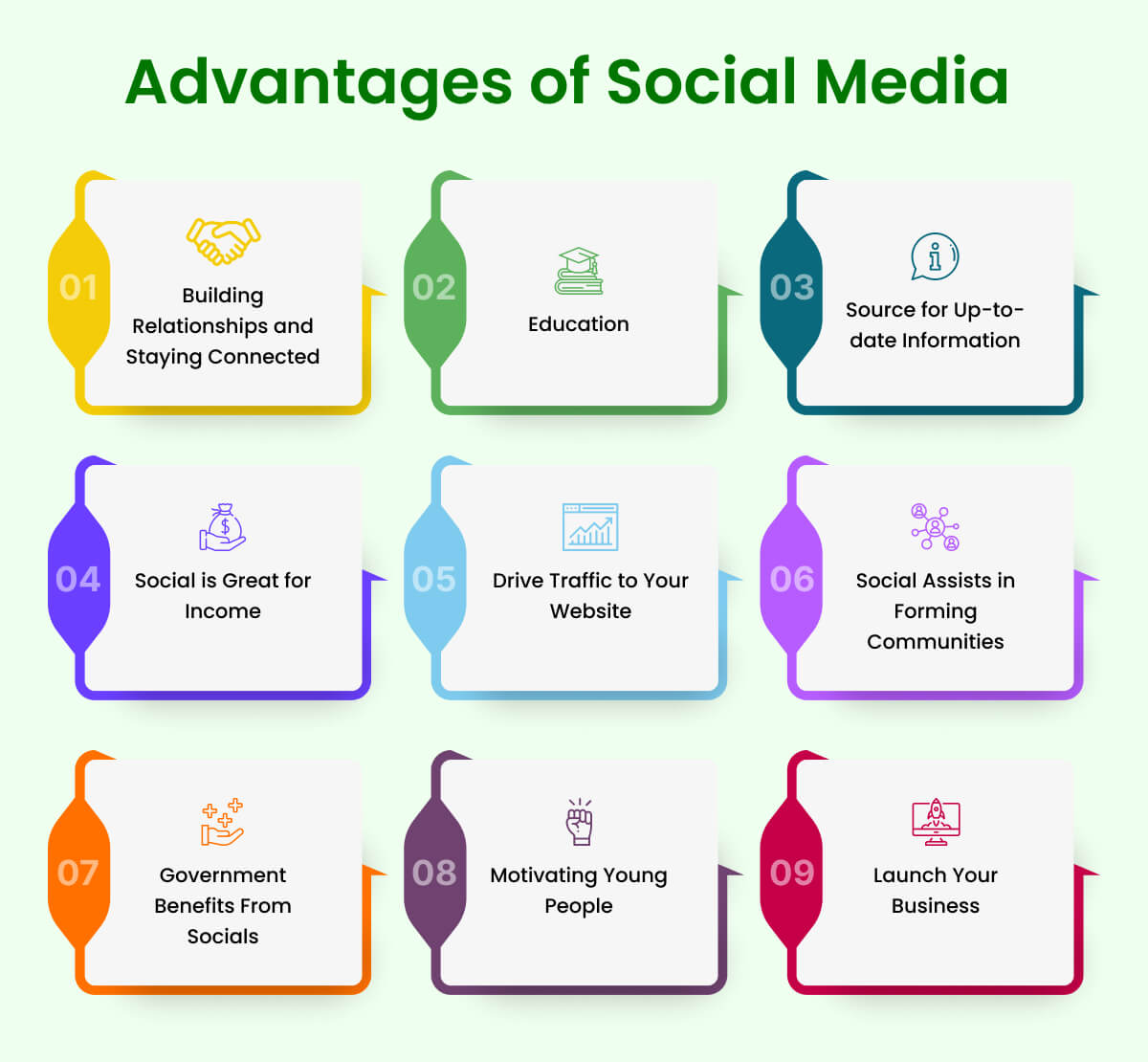The Influence of Social Media on Youth: Opportunities and Challenges
In today's digital age, social media has become an inseparable part of daily life, especially for younger generations. Platforms like Instagram, TikTok, Snapchat, and YouTube are not only tools for communication but also powerful mediums for entertainment, education, and self-expression. While these platforms offer numerous opportunities, they also present unique challenges, particularly for youth. Understanding and navigating the impact of social media on young people is essential for fostering a healthier and more balanced relationship with the digital world.
The Growing Role of Social Media in Youth Culture
Youth engagement with social media is at an all-time high. According to a 2023 survey by Pew Research Center, 95% of teenagers have access to a smartphone, and 89% use at least one social media platform daily. These platforms serve as spaces for self-expression, social interaction, and staying informed about global events. However, their ubiquity raises questions about their impact on mental health, relationships, academic performance, and personal identity.
Benefits of Social Media for Youth
Before diving into the challenges, it’s important to recognize the benefits that social media can offer when used effectively:
1. Opportunities for Creativity and Expression
Social media provides a platform for creativity and self-expression. From sharing artwork on Instagram to creating short films on TikTok, young people can showcase their talents and build an audience. This empowerment can boost confidence and encourage creative exploration.
2. Access to Information and Learning
Social media serves as a valuable educational resource. Platforms like YouTube and LinkedIn Learning offer tutorials, skill-building courses, and expert insights on virtually every topic. Additionally, youth can engage with thought leaders and communities that promote personal and academic growth.
3. Building Connections and Community
Social media enables young people to connect with peers worldwide. For those who may feel isolated in their local environment, online communities can provide a sense of belonging and support. Advocacy movements, fandoms, and hobby-based groups are just a few examples of how social media fosters connection.
4. Raising Awareness and Activism
The younger generation has harnessed the power of social media for activism and awareness. From climate change to mental health advocacy, platforms like Twitter and TikTok amplify their voices, enabling them to drive real-world impact.
Challenges of Social Media’s Influence on Youth
Despite its advantages, social media also poses significant challenges for young people. These challenges often stem from misuse, overuse, or unrealistic expectations perpetuated by these platforms.
1. Mental Health Impacts
The mental health implications of social media are a growing concern. Studies have shown links between excessive social media use and issues like anxiety, depression, and low self-esteem.
- Comparison Culture: Social media often highlights curated, idealized versions of life. This "highlight reel" can lead to unhealthy comparisons, causing young people to feel inadequate about their appearance, achievements, or lifestyle.
- Fear of Missing Out (FOMO): Seeing friends or influencers participate in events or activities can create FOMO, leading to feelings of exclusion and dissatisfaction.
2. Cyberbullying
Cyberbullying is a pervasive issue on social media. Unlike traditional bullying, it transcends physical boundaries and can happen at any time. Victims of cyberbullying often experience emotional distress, which can impact their mental health and well-being.
3. Addiction and Excessive Screen Time
The design of social media platforms encourages prolonged engagement through features like infinite scrolling and personalized algorithms. For youth, this can lead to excessive screen time, disrupting sleep patterns, physical activity, and face-to-face interactions.
4. Influencer Culture and Unrealistic Standards
The rise of influencers has introduced new pressures for young people. Many influencers portray unattainable beauty standards, lavish lifestyles, or exaggerated career success. This can create a distorted sense of reality, leading to dissatisfaction and unhealthy aspirations among impressionable audiences.
5. Privacy Concerns
Young people often underestimate the importance of online privacy. Sharing personal information, location data, or sensitive content can make them vulnerable to exploitation, identity theft, or even predatory behavior.
6. Impact on Academic Performance
The distraction of social media can negatively affect academic performance. Checking feeds during study hours, prioritizing online engagement over assignments, or experiencing disrupted focus can all contribute to lower grades and academic challenges.
Strategies for Navigating Social Media Challenges
Addressing these challenges requires collective efforts from individuals, families, educators, and policymakers. Here are some strategies to help youth navigate the influence of social media effectively:
1. Promote Digital Literacy
Teaching digital literacy is crucial in equipping young people with the tools to critically analyze the content they consume. This includes recognizing misinformation, understanding algorithms, and being aware of the potential consequences of oversharing.
2. Set Healthy Boundaries
Encouraging balanced use of social media is essential. Families can establish screen-free times, such as during meals or before bed, to promote healthier habits. Apps that monitor screen time or limit app usage can also be helpful.
3. Encourage Open Communication
Parents and guardians should foster open dialogue about social media. Creating a safe space for young people to share their experiences, concerns, or challenges online can help build trust and provide support.
4. Focus on Positive Role Models
Encouraging youth to follow influencers or accounts that promote positivity, education, and authenticity can shift the focus from unrealistic standards to personal growth. Platforms should also prioritize promoting diverse and inclusive content.
5. Address Cyberbullying Proactively
Schools, families, and communities should adopt a zero-tolerance approach to cyberbullying. Reporting harmful behavior, providing counseling for victims, and educating young people about the impact of their online actions can help mitigate this issue.
6. Integrate Social Media into Education
Rather than viewing social media as a distraction, educators can incorporate it into lessons. Teaching students how to use social media for research, collaboration, and advocacy can transform it into a productive tool.
7. Advocate for Better Policies
Governments and social media companies must take responsibility for creating safer platforms. Stricter privacy laws, improved content moderation, and transparency in algorithms can reduce the risks associated with social media use.
Success Stories and Positive Trends
Despite its challenges, social media has fostered numerous success stories among young people:
- Mental Health Awareness Campaigns: Initiatives like #BellLetsTalk and #MentalHealthMatters have encouraged young people to share their stories and seek help, breaking the stigma around mental health.
- Educational Content Creators: Accounts focused on STEM, history, art, or language learning have inspired thousands of young people to pursue their passions and expand their knowledge.
- Youth-Led Activism: Movements like #FridaysForFuture and #BlackLivesMatter have demonstrated the power of social media in amplifying youth voices and driving societal change.
Conclusion
Social media is a powerful tool that has reshaped the way young people interact with the world. While it offers vast opportunities for creativity, connection, and learning, it also presents significant challenges that must be addressed. By promoting digital literacy, fostering open communication, and advocating for better online habits, young people can navigate the influence of social media in a balanced and meaningful way.
The ultimate goal is to empower youth to harness the benefits of social media while mitigating its risks, ensuring that it remains a force for good in their lives. By working together as a society, we can create a digital environment that nurtures growth, inclusivity, and well-being for future generations.





